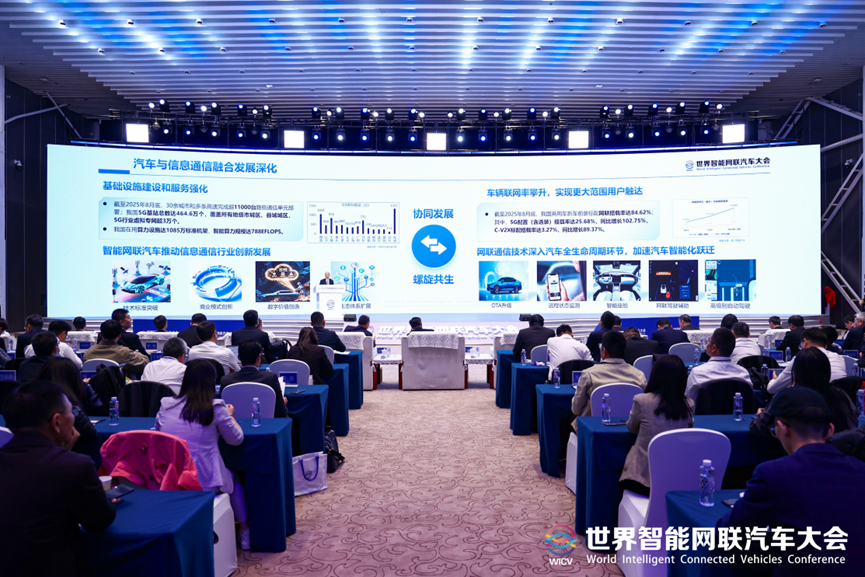On 18 October 2025, the Technology Roadmap of Intelligent and Connected Vehicle Network (2025–2030) (hereinafter referred to as the roadmap) was officially released at the closing ceremony of the 2025 World Intelligent and Connected Vehicle Conference.
The roadmap represents a collective achievement by the IMT-2020 (5G) Promotion Group C-V2X Task Group, the National Engineering Research Center of Mobile Communications and Vehicular Networks, the China Institute of Communications (CIC), the China Society of Automotive Engineers (CSAE), the China Communications Standards Association (CCSA), and relevant cross-industry organizations and enterprises from the information and communications, automotive, and security sectors.
Wei Ran, Chief Engineer of the China Academy of Information and Communications Technology (CAICT), provided an in-depth interpretation of the roadmap. Wei emphasized that intelligent connected vehicles (ICVs) impose comprehensive demands on the information and communications industry, including long-term availability, stable and reliable transmission, multi-scenario adaptability, and high-level security protection. Meeting these requirements calls for the systematic integration of communication networks, computing infrastructure, and network security technologies to establish a three-dimensional network system characterized by ubiquitous access, coordinated capabilities, and trusted security. This system will provide ICVs with stable, reliable, wide-coverage, and on-demand connectivity, as well as collaborative computing capabilities, thereby supporting their high-quality development.
Ubiquitous Access and Coordinated Service Connectivity
- Increase the installation rate of advanced communication capabilities in vehicles to strengthen on-board network access capacity.
- Enhance network coverage in vehicle operating environments by achieving seamless “sky–earth” integration through terrestrial and satellite communications and complement long-range cellular coverage with short-range direct communication to ensure stable and reliable network connections for vehicles.
- Improve network performance based on network characteristics and service scenario requirements, enabling differentiated services across various networks and ensuring efficient and reliable data transmission.
Computing Resource Infrastructure
It is essential to establish a computing infrastructure system featuring hierarchical “end–edge–cloud” deployment and coordinated capabilities. This includes improving service capacity in terms of equipment reliability, intelligent computing performance, and long-term operational sustainability. Deeper integration between computing and network transmission is vital to provide vehicles with on-demand and precisely matched computing services.
Security Protection
To address increasingly complex external threats, a comprehensive defense-in-depth system covering the entire “end–pipe–cloud” chain must be established. This involves strengthening cybersecurity protection and situational awareness, building trusted identities, and using cryptographic technologies to ensure confidentiality, integrity, and non-repudiation of core data during transmission and storage, thereby enhancing the overall security posture of the system.
Where the Future lies
The roadmap calls for taking “intelligentization and connectivity” as the guiding principles, adhering to cross-sector collaboration and integrated development, and promoting the R&D of converged technologies and the expansion of application scenarios. These efforts will drive the transformation of automotive products, foster innovation and upgrading in the information and communications sector, and build a strong brand image for China’s intelligent connected vehicle industry.
Click the link to obtain the report in Chinese: https://www.caict.ac.cn/xwdt/hyxw/202510/t20251028_697622.htm
If you need English Translation, please contact SESEC team via email: assistant@sesec.eu





